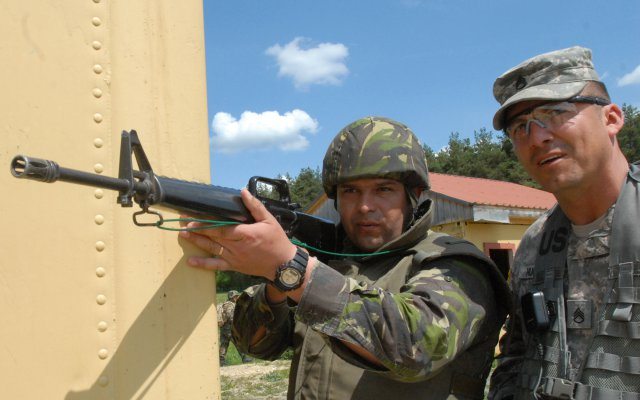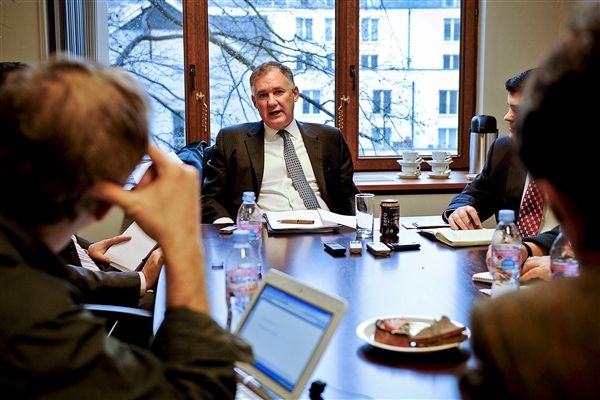An Improvised explosive device does not identify victims by name or by face, and does not care what uniform a Soldier wears. Improvised explosive devices, or IEDs, are the favorite, most deadly, weapon of insurgents in Afghanistan, and knowing how to defeat them is one of the most important tasks a Soldier from any country serving with the International Security Assistance Force in Afghanistan will face.
This is why at the Hohenfels Training Area, the Joint Multinational Training Command’s Badger Team, a specialized team in charge of counter IED training, has created a course to teach multinational Soldiers skills integral to defeating IEDs in Afghanistan.
“Our multinational partners are the ones that are replacing some of the American Soldiers in theater, and a lot of the time you work hand-in-hand with our multinational partners. So we are actually trying to train them up so that they can go back to their countries and can eventually take the lead as they have already started to do in theater,” Sgt. Maj. Martin S. Celestine, the senior advisor for the Joint Multinational Training Command, or JMTC, Badger Team.
The JMTC’s Badger Team first teaches students the most up-to-date tactics, techniques and procedures used by the enemy, and then gives them the challenge of negotiating a mock Afghan village and defeating several devices. The training is based upon not only the first-hand knowledge of the trainers who have all served in the Middle East, but also from information that comes weekly from units who are currently deployed to Afghanistan.
One of the units JMTC relies on is Task Force Paladin, whose mission is to find and destroy IEDs, and is currently deployed to the Paktika Province of Afghanistan.
“These are actual scenarios that have already happened. So we are replicating incidents that have already happened in Afghanistan and doing it here in Hohenfels,” said Staff Sgt. Gustavo Hurtado, a counter IED trainer with the Badger team.
The value and relevance of this information is what makes training at the Hohenfels Training Area, or HTA, ideal for Soldiers preparing for missions in Afghanistan, said Celestine.
An example of the implementation of this knowledge was a joint U.S. and Albanian Operational Mentor Liason Team, or OMLT, comprised of Soldiers who chose the C-IED at the HTA for part of their pre-deployment training. The team will soon partner together to train the Afghan National Security Forces near Kabul, Afghanistan, said Chief Warrant Officer 2 Adrian Mendoza, an Intelligence Mentor with the New Jersey National Guard OMLT.
“For me it is a pre-deployment situation, and it [the training] is very very useful. Here I had the opportunity to learn the tactics, techniques and procedures that NATO uses [to defeat IEDs],” said Albanian Army Lt. Andricel Hoxhalhi a logistical support officer for general staff with the Joint Operation Center. “It helps a lot because we had a lot of after-action reviews with the U.S., Bulgaria, Romania, and a lot of other countries,” he added.
Both Hoxhalhi and Mendoza agreed that the training provided them with an invaluable opportunity to collaborate and learn to defeat a lethal opponent together, and they felt a greater sense of cohesion as a team going into the combat zone.











